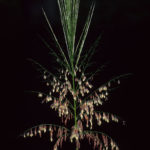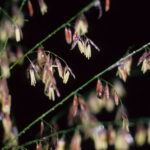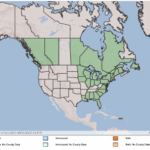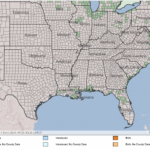Zizania aquatica
USDA, NRCS. 2018. The PLANTS Database (http://plants.usda.gov, 28 March 2018). National Plant Data Team, Greensboro, NC 27401-4901 USA.
Illustration courtesy of University of Florida/IFAS Center for Aquatic and Invasive Plants. Used with permission.
What is Annual Wild Rice?
Physical Characteristics
Leaves:
- Very large grass
- Strap-like
- 3-4 feet long
- Up to 2 inches wide
- Smooth
- Sharp edges
Flowers:
- Large
- Branching
- Upright
- Up to 2 feet long
- Up to 1 foot across
- Many flowered
Fruit:
- Edible grains
- Oval shaped
- Yellow or reddish in color
Stem:
- Up to 9 feet tall
- Spongy
- Thick
Where Does it Grow?
Annual wild rice can be found along the edges of marshes and streams.
Pros and Cons of Annual Wild Rice
Submerged portions of all aquatic plants provide habitats for many micro and macro invertebrates. These invertebrates in turn are used as food by fish and other wildlife species (e.g. amphibians, reptiles, ducks, etc.). After aquatic plants die, their decomposition by bacteria and fungi provides food (called “detritus”) for many aquatic invertebrates.




